Introduction
Metal crucibles are essential tools in numerous scientific and industrial processes where high temperatures and reactive environments are involved. Crucibles must be robust, resistant to heat and corrosion, and should not contaminate the materials they hold.
This article explores some of the most commonly used metal crucibles, including those made from tantalum, tungsten, molybdenum, platinum, and nickel, discussing their properties, advantages, and typical applications.
Related reading: Get The Most Suitable Crucible For Your Lab
1. Tantalum Crucibles
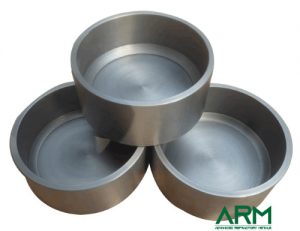
Tantalum is celebrated for its outstanding resistance to corrosion and excellent thermal properties. With a high melting point of about 3017°C, tantalum crucibles are suitable for working with highly corrosive materials, such as aggressive acids (except hydrofluoric acid and strong alkalines) and molten metals. These properties make tantalum crucibles indispensable in the chemical processing industry, where maintaining the purity of chemicals is crucial. Additionally, due to their inertness, tantalum crucibles are often used in superalloy production and high-purity applications in materials science and metallurgical processes.
2. Tungsten Crucibles
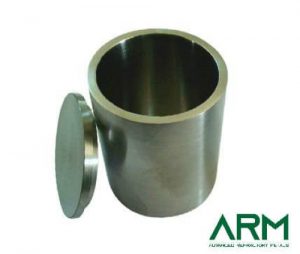
Tungsten crucibles lead the pack in terms of high-temperature resistance, boasting the highest melting point of all metals at 3422°C. This makes them ideal for applications such as crystal growth processes and high-temperature sintering in vacuum or inert atmospheres. However, their susceptibility to oxidation at high temperatures without protective atmospheres limits some applications. Tungsten crucibles are particularly valued in the electronics industry, especially in the production of semiconductors and during the sapphire crystal growth used in LED manufacturing.
3. Molybdenum Crucibles
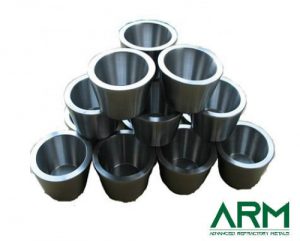
Molybdenum crucibles, with a melting point of 2623°C, offer a balanced profile of high heat resistance and thermal conductivity, facilitating rapid heating and cooling processes. They are less expensive than tungsten and platinum, making them a cost-effective alternative for many high-temperature operations. Molybdenum crucibles are frequently used in the heat treatment of metals and material densification in industries where enhanced thermal properties are required. However, their moderate corrosion resistance can be a drawback in more aggressive chemical environments.
4. Platinum Crucibles
Platinum crucibles are renowned for their exceptional corrosion resistance and good thermal stability, although they have a lower melting point (1768°C) compared to refractory metal crucibles. Their resistance to chemical attack makes them particularly suitable for applications involving melting or processing precious metals, high-purity chemical syntheses, and ashing tests in laboratory settings. Despite their advantages, the high cost of platinum often necessitates careful consideration of their use in budget-sensitive applications.
5. Nickel Crucibles
Nickel crucibles are a more economical choice for many standard laboratory and industrial processes. With a melting point of about 1455°C, they are suitable for less intensive applications and provide good resistance to alkalis and organic compounds. Nickel crucibles are often employed in the steel industry for slag analysis and other metallurgical tests where moderate temperature resistance is sufficient. Their limitation comes from their performance in acidic environments, where they are more prone to corrosion.
Selecting the Right Crucible
Choosing the right crucible material depends on several factors, including the nature of the material to be processed, the temperature requirements, the chemical environment, and budget constraints. Here are a few considerations:
- Temperature Requirements: For high-temperature applications, tungsten and molybdenum are preferable, while platinum and nickel are suitable for moderate temperatures.
- Chemical Environment: Tantalum and platinum offer the best corrosion resistance. Nickel and molybdenum may be suitable depending on the specific chemicals involved.
- Budget: Platinum crucibles are costly and generally reserved for high-purity applications, while nickel and molybdenum provide more budget-friendly options without significantly compromising performance.
- Application Specifics: The choice may also depend on specific industry requirements, such as purity levels in semiconductor manufacturing or durability in metallurgical processes.
Conclusion
Metal crucibles are vital components in many of the processes that drive scientific discovery and industrial production. Each metal — tantalum, tungsten, molybdenum, platinum, and nickel — brings its unique set of properties to bear, making them indispensable in their respective fields. Understanding the specific requirements of your application is key to selecting the appropriate crucible, ensuring efficiency, cost-effectiveness, and the integrity of the materials processed.
Advanced Refractory Metals (ARM) offers custom production of tantalum crucibles tailored to customer specifications, all at competitive prices. We also provide diverse metal crucibles ideal for a variety of applications in different industries. Send us an inquiry if you are interested.
Table 1. Metal Crucibles Comparison
| Metal | Melting Point (°C) | Main Applications | Cost Effectiveness |
| Tantalum | 3017 | Chemical processing, superalloy production, high-purity applications | Moderate |
| Tungsten | 3422 | High-temperature sintering, semiconductor and LED manufacturing | High |
| Molybdenum | 2623 | Heat treatment of metals, material densification | Moderate |
| Platinum | 1768 | Processing precious metals, high-purity chemical syntheses, laboratory tests | Low (due to high cost) |
| Nickel | 1455 | Slag analysis, less intensive laboratory and industrial processes | High (cost-effective) |
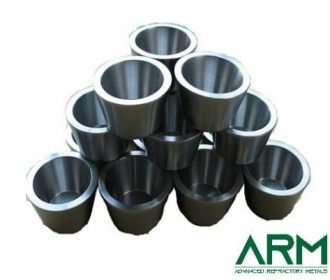
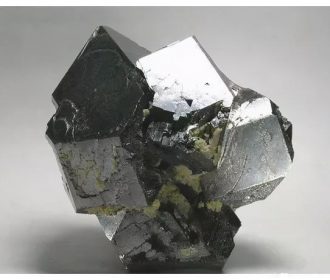
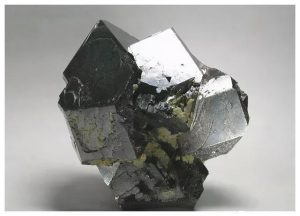
Recent Comments